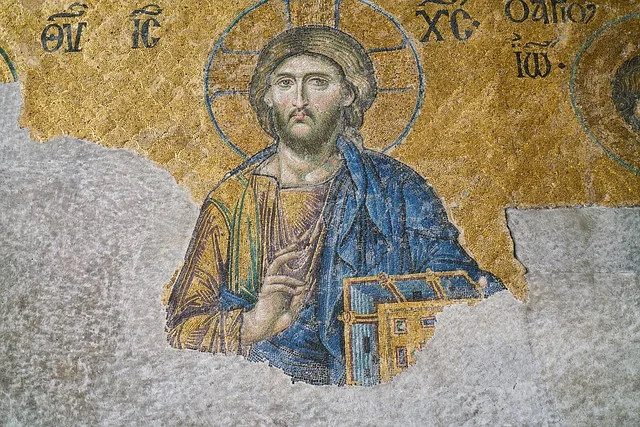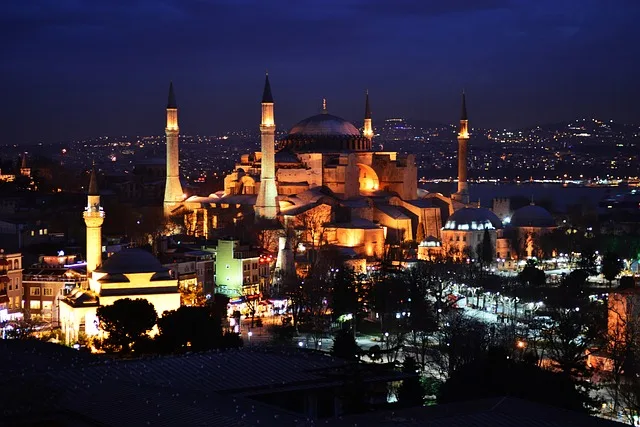Originally built in 537 AD as a cathedral, St. Sophia was the heart of Eastern Orthodox Christianity. Picture the stunning mosaics and the soaring dome, a marvel of engineering that left visitors in awe. It was a place where the divine met the earthly, where prayers echoed off the walls, and where the community gathered in reverence. But as history would have it, the tides turned. In 1453, after the Ottoman conquest of Constantinople, this architectural gem was converted into a mosque. Can you imagine the blend of cultures? The rich history of Christianity meeting the Islamic faith within the same walls?
As a mosque, St. Sophia underwent a transformation that was both physical and spiritual. Minarets were added, and the interior was adorned with intricate Islamic calligraphy. It’s like watching a beautiful painting evolve, each stroke adding depth and meaning. The mosque became a symbol of the Ottoman Empire, a place where people from diverse backgrounds came together in worship.

Today, the Mosque of St. Sophia stands as a UNESCO World Heritage site, a bridge between two worlds. It invites visitors to explore its layered history, to feel the weight of centuries in its stones. Whether you’re drawn by its architectural splendor or its rich narrative, St. Sophia is a reminder of how places can embody the spirit of their time, adapting and evolving while still holding onto their roots.
The Transformation of St. Sophia: A Journey from Sacred Church to Majestic Mosque
St. Sophia’s journey from a sacred church to a majestic mosque is nothing short of fascinating. When the Ottomans conquered Constantinople in 1453, they didn’t just seize a building; they embraced a legacy. They transformed this Christian sanctuary into a mosque, adding minarets that reach for the sky like fingers pointing towards the divine. It’s as if the structure itself is a bridge between two worlds, where the echoes of church bells blend seamlessly with the call to prayer.
But the transformation didn’t stop there. In the 20th century, St. Sophia took on yet another role, becoming a museum. This shift was like a breath of fresh air, allowing people from all walks of life to appreciate its beauty and history. Visitors marveled at the way the light danced through its massive dome, illuminating centuries of art and culture.
Today, as it reopens as a mosque, St. Sophia stands as a testament to resilience and adaptability. It’s a living narrative, inviting us to reflect on the layers of history that shape our world. Isn’t it incredible how one building can embody the spirit of so many different eras and beliefs?
Echoes of History: How the Mosque of St. Sophia Bridges Two Faiths
Picture this: you step inside, and your eyes are immediately drawn to the stunning dome that seems to float above you. It’s a masterpiece that has inspired countless architects and artists. The golden mosaics of Christ and the Virgin Mary gaze down, while the calligraphy of Arabic script dances alongside them. It’s as if the building itself is a bridge, connecting two worlds that, on the surface, might seem worlds apart.
Isn’t it fascinating how a single structure can encapsulate such diverse beliefs? The Mosque of St. Sophia stands as a testament to the coexistence of faiths, inviting visitors from all walks of life to reflect on their shared humanity. When you walk through its doors, you’re not just entering a building; you’re stepping into a dialogue that has spanned centuries.
The echoes of history resonate within its walls, reminding us that while our beliefs may differ, the quest for understanding and connection is universal. Just like a well-worn book, each chapter of the Mosque of St. Sophia reveals layers of culture, art, and spirituality. It’s a place where the past and present intertwine, urging us to appreciate the beauty of diversity and the stories that unite us all.
From Byzantine Splendor to Ottoman Grandeur: The Evolution of St. Sophia
As centuries rolled on, the tides of power shifted, and St. Sophia found itself at the heart of the Ottoman Empire. In 1453, when the Ottomans conquered Constantinople, they didn’t just seize a city; they embraced its soul. St. Sophia was transformed into a mosque, adorned with intricate calligraphy and stunning minarets that reached for the heavens. It’s like watching a beautiful painting evolve, each brushstroke adding depth and character. The vibrant mosaics of Christ and the Virgin Mary were covered, yet their essence lingered, whispering tales of the past.
This evolution didn’t just change the building; it mirrored the cultural shifts of the time. St. Sophia became a symbol of unity, blending Christian and Islamic elements into a harmonious masterpiece. Can you imagine the conversations that took place within those walls? The debates, the prayers, the celebrations? Each era left its mark, creating a rich tapestry of history that continues to captivate us today.
St. Sophia’s Dual Legacy: A Symbol of Faith, Culture, and Controversy
When you think of St. Sophia, what comes to mind? Is it the breathtaking architecture that seems to touch the sky, or the rich tapestry of history woven into its very walls? This iconic structure in Istanbul is more than just a stunning example of Byzantine architecture; it’s a living testament to the complex interplay of faith, culture, and controversy that has shaped its existence over the centuries.
Imagine walking through its grand doors, where the echoes of prayers and the whispers of history intertwine. Originally built as a cathedral in the 6th century, St. Sophia was a beacon of Orthodox Christianity, a place where faith flourished. But as the tides of history shifted, so did its purpose. When the Ottomans took control, it transformed into a mosque, symbolizing a new era and a different faith. This duality is what makes St. Sophia so fascinating. It’s like a palimpsest, where layers of history are written over one another, each telling a different story.

Yet, this transformation hasn’t come without its share of controversy. The debates surrounding its status—whether it should remain a museum, a mosque, or something else entirely—reflect broader discussions about identity and heritage. It’s a bit like a family heirloom that everyone wants to claim, each person seeing it through their own lens of belief and culture.
Frequently Asked Questions
Are there any visitor guidelines for the Mosque of St. Sophia?
Visitors to the Mosque of St. Sophia are expected to dress modestly, covering shoulders and knees. Footwear should be removed before entering, and silence is encouraged to maintain a respectful atmosphere. Photography may be restricted in certain areas, so it’s advisable to check for specific guidelines upon arrival.
What is the significance of the Mosque of St. Sophia today?
The Mosque of St. Sophia, originally a cathedral, holds significant cultural and historical importance today as a symbol of the intersection of Christianity and Islam. It represents architectural innovation and has been a UNESCO World Heritage site, attracting millions of visitors. Its conversion into a mosque reflects contemporary religious dynamics and serves as a focal point for discussions on heritage, identity, and coexistence.
How did the transition from church to mosque occur?
The transition from church to mosque typically occurred during periods of conquest or cultural change, where existing religious structures were repurposed to serve the new dominant faith. This often involved modifications to the architecture and interior to align with Islamic practices, such as the addition of a mihrab and minaret, reflecting the shift in religious and community identity.
What architectural features define the Mosque of St. Sophia?
The Mosque of St. Sophia is renowned for its massive dome, which creates a sense of spaciousness and light. Its innovative use of pendentives allows the dome to rest on a square base, a significant architectural advancement. The interior is adorned with intricate mosaics and marble pillars, showcasing Byzantine artistry. The building also features a harmonious blend of Christian and Islamic elements, reflecting its historical significance as both a cathedral and a mosque.
What is the history of the Mosque of St. Sophia?
The Mosque of St. Sophia, originally constructed as a cathedral in 537 AD under Byzantine Emperor Justinian I, served as a central place of worship for Eastern Orthodox Christianity for nearly 1,000 years. Following the Ottoman conquest of Constantinople in 1453, it was converted into a mosque, reflecting the city’s new Islamic identity. The building is renowned for its massive dome and stunning mosaics, which blend Christian and Islamic art. In 1935, it was secularized and turned into a museum, and in 2020, it was reconverted into a mosque, continuing to symbolize the rich cultural and religious history of Istanbul.

